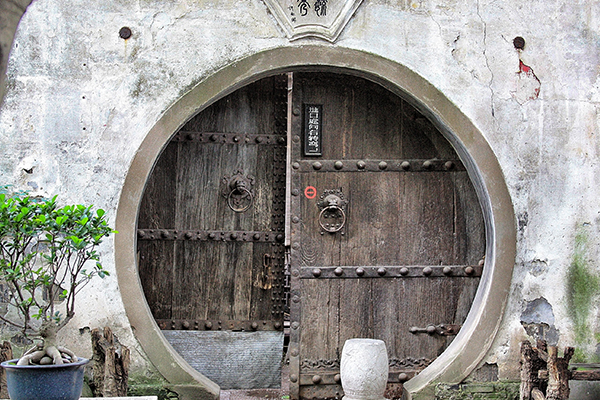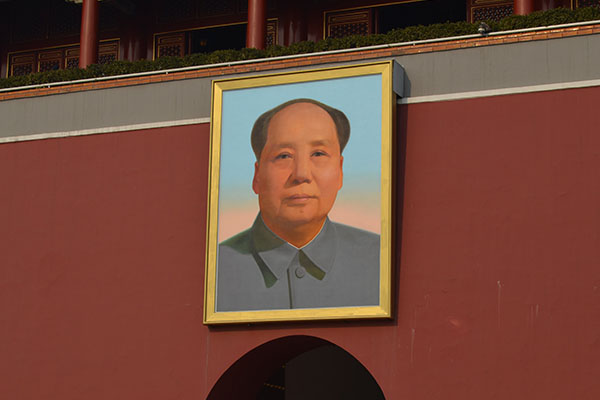Part 1 Introduction
I believe that poetry has a similar definition as suggested by James Liu—that poetry is seen as a double exploration of worlds and of language. Chinese poetry, to me, could be defined as a series of words written in a very strict format and organizational structure that expresses thoughts, feelings, emotions, about the writer, often inspired by life and the events happening in the world around that writer.
Basically, the two elements of Chinese poetry are content and language. The content needs to be meaningful and it often has to resonant with the readers well in order for that particular poem to survive thousands of years and reach the hands of the modern Chinese. The language is often beautiful and very organized to suit the various rules for different kinds and genres of ancient Chinese poetry.
This paper will first explain the ideas presented by James Liu to introduce what Chinese poetry is. Then it will analyze two poems from the textbook— “Sky Clear Sand” by Ma Chih-yuan and a Seven-syllabic Regulated Verse by Li Shang-yin “With Title”.
Part 2 Poetry as a double exploration of worlds and languages
First, there are four groups of critics named the “moralists”, “individualists”, “technicians”, and “intuitionalists” and the author of the textbook analyzed each of them individually, providing his opinions.
Having summarized and analyzed the previous views, the author introduced his own opinions about Chinese poetry. He argued that Chinese poetry consisted of two elements, the world, and the language. The world element included emotions and scenes.
He argued that for Chinese poetry, there is often an actual scene and an imagery scene that can merge into each other. This characteristic is achieved by writing lines that are both expressive and descriptive. From there, he extended the idea of “world” and claimed that Chinese poetry is a synthesis of the external and the internal aspects of life. The external aspects include natural objects, events, and actions.
The internal aspects included thoughts, memory, fantasy, and of course, emotion. The external environment is reflected in the international elements and thoughts of poem writers to produce a masterpiece.
Apart from the content of poetry, the author also discussed the language aspect of ancient Chinese poetry. With strict structures, the words have to show a certain pattern and must have the right sound. Only when both of those two aspects are treated well can it be considered good Chinese poetry.
Part 3 Criteria for a good poem
3.1 Beautiful language
Most famous Chinese poems that were passed on from ancient times showed conformity to the rules of writing a certain structure of poetry with beautiful language. In addition to writing the designated number of words in each phrase, and choosing the words with the correct tones, the words themselves were beautiful and the structure of the entire poem is organized.
3.2 Rich emotions
Since “world” is defined as “emotion and scene” by Wang Kuo-Wei, then most famous poems certainly evoked the readers of some emotion and the readers could picture the scene in front of their eyes after reading about the poem. With those pictures, the readers can be evoked of some sort of emotion and the feelings of the writer and the reader can have some resonance.
Afterward, the reader can be able to infer from the poem other theories and aspects of life that are related to society, history, and etc. and the thoughts should not be confined to the poem itself.
Part 4 Analysis of sample poems
4.1 “Sky Clear Sand” by Ma Chih-yuan
This is a Dramatic Lyric written in the Yuan Dynasty. It is written from a song that has already existed and the writer inserts words into the already established pattern. The form of Dramatic Lyric is that there could be lines with unequal lengths and the number of syllables in each line is also different. The rhyme for every line is “a” and the tonal pattern is also presented in the book.
The poem is structured such that the first three lines all wrote three images or items in each line. The nine items listed are tree branches, ancient trees, crows, bridges, streams, houses, ancient roads, the wind, and horses. The second to last line described that the sun is setting down at the west. The last line described emotions and feelings. This is such a simple and straightforward poem, yet, the emotions expressed are very rich.
The imagery in this poem is very easy to be formed into a picture inside the readers’ minds. The six adjectives that appeared right in front of the six objects in the first line and the third line precisely depicted what the object is like. First, the tree branches are described as rotten.
If he just writes “tree branches”, then the readers may imagine the branches to be full of green leaves and a sense of liveliness. However, now that he added rotten, readers will soon picture the end of autumn, when green leaves all turned yellow and fell down from the branches.
Second, he used the word “ancient” to decorate the object “trees”. This further proved that the image is not lively; rather it is a tree that has been there for so many years. Third, “evening” is added before “crows” to invoke a sense of scariness and loneliness. It is turning dark, although not completely dark yet.
There is a tendency to turn darker and gloomier. Fourth, the word “ancient”, though he used a different word in Chinese, is added in front of “road” to depict a scene with a road that has already been there for many years. Old roads tend to be cracked and be full of dust because, in ancient China, it was mostly stone roads without the modern technology to build better roads. Fifth, “west” is used to describe the wind and indicated the direction in which the wind came from.
In China, there is actually a special meaning attached to the west wind that I will analyze later in the “symbols” paragraph. Sixth, “skinny horses” are used to describe the fact that the horses were not fed well, or have been traveling a long way, making them very tired.
There are many symbols in this poem such as the west wind. In Chinese, the west wind is not a positive symbol and may mean that something is not successful.
The poem allusions in this short poem include the house, which means that the traveler on the road wants to go home. If this traveler has been riding a long way on a horse that is already tired and skinny, then it must mean that the traveler had been on his way for a long time.
Right now, when he sees a house on his way, he thinks about his family and how he can go back home and reunion with his family. Second, the word “rotten” not only depicts what the tree branches look like but also alludes to the fate of his career and the fate of the nation.
The readers could think about how his career might be hindered due to the fact that he might have failed a test to become a government official. Also, since Yuan is not a particularly strong dynasty in China in terms of politics or economics, readers nowadays can look back upon the history of China and associate this “rotten tree” as the fate of the feudal Chinese society.
Although this poem is very concise, it created an immense sense of loneliness in late autumn.
4.2 “Without Title” by Li Shang-yin
Since there are many poetries with “no title” written by Li Shang-yin, I want to clarify first that the poem I am analyzing in this section begins with the line “Hard it is for us to meet and hard to go away”.
This poem is a Seven-syllabic Regulated Verse written in the Tang Dynasty. Some of the rules for writing a Seven-syllabic Regulated Verse included
- eight lines in total
- seven syllables for every line
- the same rhyme is used throughout the poem
- the four lines in the middle must form two antithetical couplets
- the tone pattern follows a standardized pattern.
With this standard, we can see that the poem contained eight lines with seven syllables in each line. The rhyme is “an” for the end of every line. The third and fourth lines “the spring silkworm will only end his thread when death befalls/the candle will drip with tears until it turns to ashes grey” did form an antithetical couplet. Finally, as the author has already analyzed in the book, the poem did follow a specific tonal pattern and I will not repeat the pattern here again in this paper.
The poem is structured such that the first two verses talked about the main idea in the poem, how two lovers cannot see each other often. The third and fourth verses used comparisons and allusions to make vows that the lovers will stay together. The fifth and sixth verses talked about how sad it is now that the lovers cannot meet each other. The last two verses are a beautiful wish that birds can deliver messages for the two lovers.
There is much imagery in this poem such as “silkworm” and “candle”. Both objects were used to turn the abstract idea of how the lovers miss each other into concrete objects so that the readers can form a picture in their minds. Think about how hard the silkworms work and how a candle wears itself out little by little, the readers will be able to picture the state that the lovers are in when they are waiting impatiently to see each other.
The allusion is mainly present in the third and fourth verses of the poem. For example, the word “thread” has the same pronunciation as the word “think about” in Chinese. It meant that the two lovers think of each other often. “Tears” meant both the tears for the candle when it was burned and the tears that dripped down the lovers’ faces when they think about each other.
“Mountain Peng Shan” in Chinese literature can be translated as the utopia in the western world. The author mentioning this word showed how much those two lovers wanted to live together in an imaginary world that has perfect living conditions. The kind of bird that the mentioned in the last line is a messaging bird in ancient Chinese myth and this signaled that they hoped that the bird can send messages between them.
My thought on the poem is that it will definitely create a sense of resonance because there are many lovers who are eager to see their partner when they are in love but cannot see each other every day.
Part 5 Conclusion
In conclusion, the two poems mentioned above were all famous pieces that are still very well known even today because they not only used beautiful languages but also conveyed emotions that readers nowadays can still find resonance. The two topics for the poems not only attracted readers in their era but also readers nowadays. By studying those famous masterpieces written by great poets in the past, we can enhance our understanding and usage of the Chinese language and feel the emotions that the writers felt in their lives.








Leave A Comment